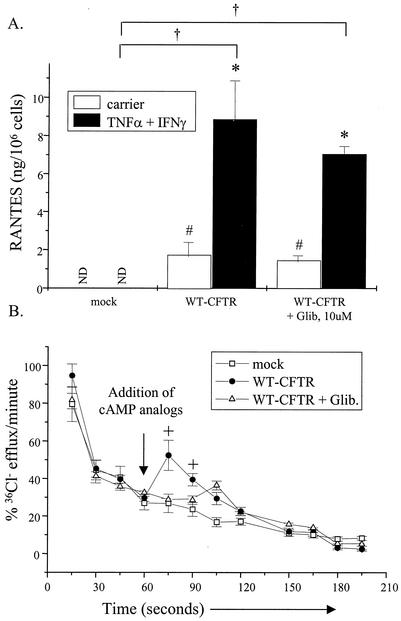FIG. 2.
CFTR-mediated chloride transport does not play a role in RANTES expression. (A) IB3-1 cells were transfected with constructs encoding β-galactosidase and WT-CFTR or a mock control (each at 1.0 μg/well) as described in the Fig. 1 legend. Following transfection, cells were cultured in the presence and absence of TNF-α and IFN-γ (each at 100 ng/ml) together with or without glibenclamide (10 μM) for 18 h at 37°C. Supernatants were harvested and analyzed for RANTES protein expression via ELISA. Results are reported as nanograms per 106 cells (n = 3; ND, none detected; *, P ≤ 0.05 relative to respective carrier-treated control; #, P ≤ 0.05 relative to carrier-treated mock control; †, P ≤ 0.05 relative to TNF-α-IFN-γ-treated mock control). (B) In parallel, transfected cells cultured in the presence and absence of glibenclamide as described above were treated with the cAMP analogs 8-bromo-cAMP and CPT-cAMP (each at 250 μM) and then monitored for changes in cAMP-dependent chloride transport via chloride efflux. Results are reported as percentages of 36Cl− efflux (at t0) per minute (n = 3; +, P ≤ 0.05 relative to mock control or glibenclamide-treated samples).

